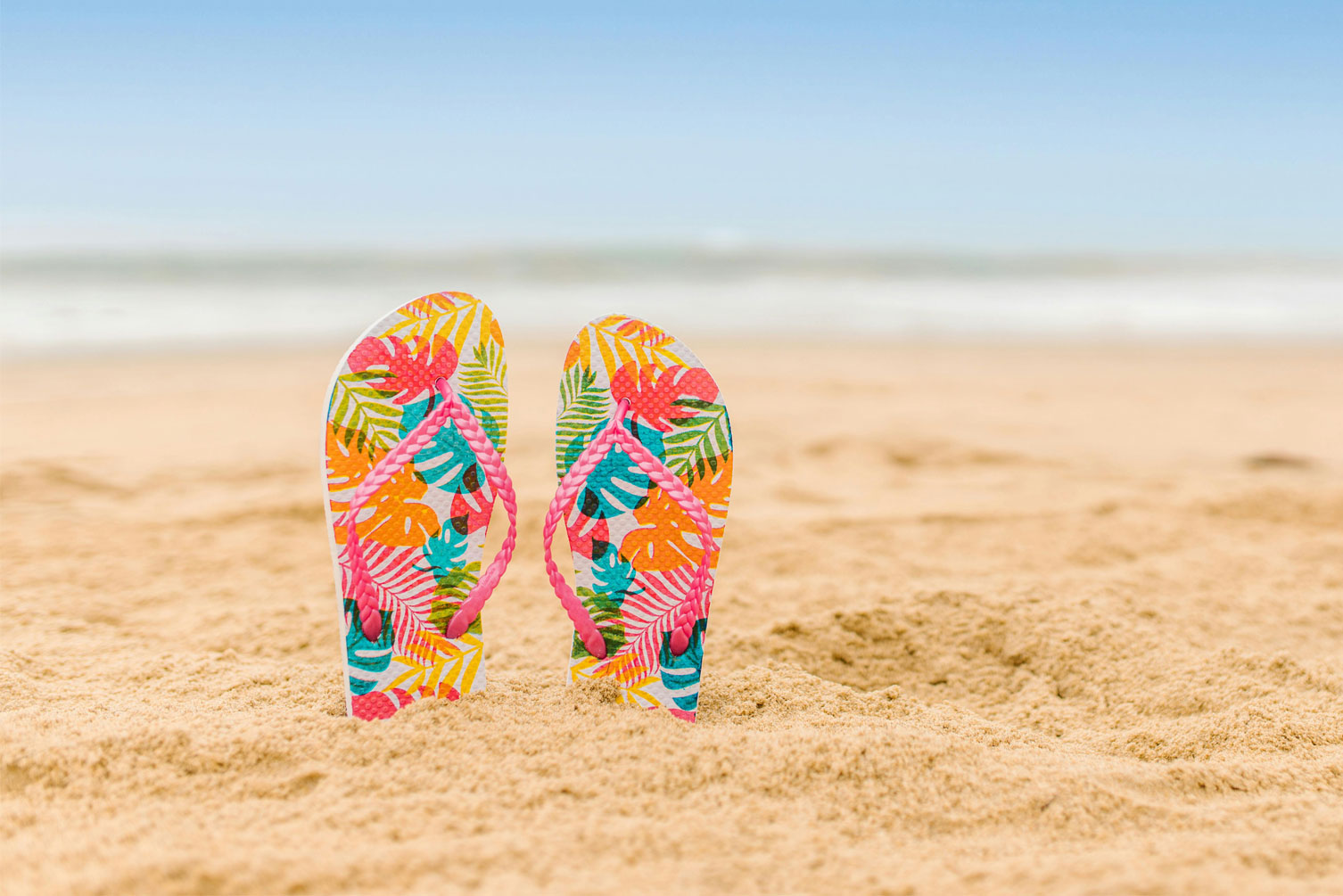
The passage of spring and the beckoning of summer sees most British people enjoying the annual tradition of putting away the winter coats and woollen jumpers, swapping knits for cotton shirts and floaty skirts. It is one of the privileges of living in a country with a seasonal climate. Many people also talk about getting their feet ready for summer and nothing quite sums up a lazy summers’ day than bare feet, speckled with sand wearing a pair of brightly coloured flip flops.
The sensation of a breeze around your sole and feeling your toes open to the elements, coupled with the easy flexibility of a flip flop makes them a desirable purchase, but have you ever wondered if flip flops are bad for your feet?
For adults who have underlying issues, such as tendonitis or bunions, flip flops can exacerbate these issues. Aside from the other clear danger of picking up stones under your foot or stubbing your toes, the first outing of the summer wearing flip flops can stretch your muscles and as the skin on your feet will be softer after a winter in socks and shoes, flip flops can also rub the skin, especially on the side of the foot. However, adults with a mature bone structure, muscles and tendons, can generally weather the change in footwear unharmed.
The same cannot be said for children’s feet, where the cartilage, muscles and tendons are still developing and the foot needs adequate support to push off from the ground beneath to develop healthily.
Any shoe that requires the toes to bunch to keep it secure will be damaging the tendons in the foot and behaviour like this at an early age will send signals to the brain that the foot is not functioning correctly. The brain can then overcompensate, changing the walking pattern for life.
A child’s footwear must be soft in the sole to allow for sensory feedback, but strong enough to protect from the ground beneath. It must allow plenty of room for toes to wiggle and it must fit securely over the upper part of the shoe, so that the child can walk unencumbered. If you are looking for a suitable and healthy summer choice, sandals are a great alternative to flip flops for children.
On days out, and especially on day trips to the beach, it’s very tempting to put a pair of colourful flip flops in the bag for the children. Sadly, the beach can be quite precarious for little feet, especially those keen to explore the rock pools. Flip flops will provide next to no grip or protection for little feet clambering over rocks, so trainers, canvas shoes or sandals are more suitable alternatives. For little feet that want to plunge into rock pools, take care of the hiding crabs and to be completely safe, select a pair of wellies for these types of adventures.
Flip flops are a fun, summer alternative to sandals, especially for adults enjoying a lazy day in the sunshine. However, we cannot recommend wearing them for extended periods of time, or for longer walks, due to the damage you can do to your tendons and skin. For children, flip flops can only be an option for very limited periods of time. All the way through childhood and into our late teens, the bones in our feet are still developing and the way we walk is still not established until we stop growing, around the ages of 16 to 21.
Therefore, while flip flops are a fun piece of footwear that can set off many summer outfits, they are simply not a suitable form of footwear to protect your feet and give your body the best start for healthy growth and development. Wearing flip flops at a party, or to lounge around the house is a nice idea, but for walking outside for any extended periods of time, or for trips to the beach it’s best to change into a comfortable pair of canvas shoes, that are washable throughout the summer or sandals, that will support the foot while also letting sand escape easily.
Author: Vista, published 19-06-2024.